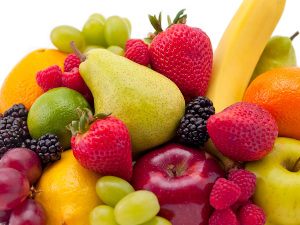Agronometrics in Charts: Chilean Cherry season ramping up

In this installment of the ‘Agronometrics In Charts’ series, Sarah Ilyas studies the state of the Chilean cherry season. Each week the series looks at a different horticultural commodity, focusing on a specific origin or topic visualizing the market factors that are driving change.
This year's global shipments of Chilean cherries are projected to reach a record high of 447,000 metric tons, a 25 percent increase over the previous season. Following the shipping delays and predicaments encountered during the 2021/2022 season, Asoex responded with greater urgency to ensure a more efficient flow of ships and containers for the current season. At the same time, factors such as an early Chinese Spring festival in 2023 have ushered in a number of new market developments.
Cristián Tagle, president of ASOEX’s Cherry Committee, noted that this year’s crop is expected to be of above par quality owing to conducive weather conditions and highlighted the efforts underway to overcome delays and port congestion. According to Tagle, ASOEX’s strong promotional programs will positively impact export volumes to the United States.
 Source: USDA Market News via Agronometrics.
Source: USDA Market News via Agronometrics.
(Agronometrics users can view this chart with live updates here)
 Source: USDA Market News via Agronometrics.
Source: USDA Market News via Agronometrics.
(Agronometrics users can view this chart with live updates here)
According to Freya Huang, Marketing coordinator of the Chilean Fruit Exporters Association (ASOEX) the promotional theme for this season is “a bit red, a bit lucky” which binds cherries with the red color that symbolizes good fortune in Chinese culture. The Chilean Cherry Committee of ASOEX has designed a series of promotional posters under the theme and made them available to all Chilean cherry retailers.
“Asoex together with producers and exporters are working hard on several fronts to improve market access for their fruit.” says Freya.
According to professor Marlene Ayala, professor and researcher at the Catholic University of Chile, the country needs new early and late varieties to avoid a large volume of fruit being harvested and processed during December and early January. Most of the commercial orchards (mid-season varieties) are harvested in a very short time, which generates logistical problems that affect packaging, storage and shipping. In addition, the accumulation of fruit in a short period reduces the benefits of producers. Production has to be redistributed, promoting the production of fruit before or after the season.
Producers are constantly testing new varieties based on potential yields and projected prices. The national genetic improvement program (programa nacional de mejoramiento genético, PMG) for cherries, carried out by INIA with support from the Biofrutales consortium and the Chilean Economic Development Agency (CORFO) is paying special importance to scouting for cherry varieties that are competitive, visually attractive to the consumer, travel well, and can be cultivated in Chile’s center-north region, without the need for chilly winters, says Dr José Manuel Donoso, a geneticist on the INIA program.
In our ‘In Charts’ series, we work to tell some of the stories that are moving the industry. Feel free to take a look at the other articles by clicking here.
All pricing for domestic US produce represents the spot market at Shipping Point (i.e. packing house/climate controlled warehouse, etc.). For imported fruit, the pricing data represents the spot market at Port of Entry.
You can keep track of the markets daily through Agronometrics, a data visualization tool built to help the industry make sense of the huge amounts of data that professionals need to access to make informed decisions. If you found the information and the charts from this article useful, feel free to visit us at www.agronometrics.com where you can easily access these same graphs, or explore the other 21 commodities we currently track.








































